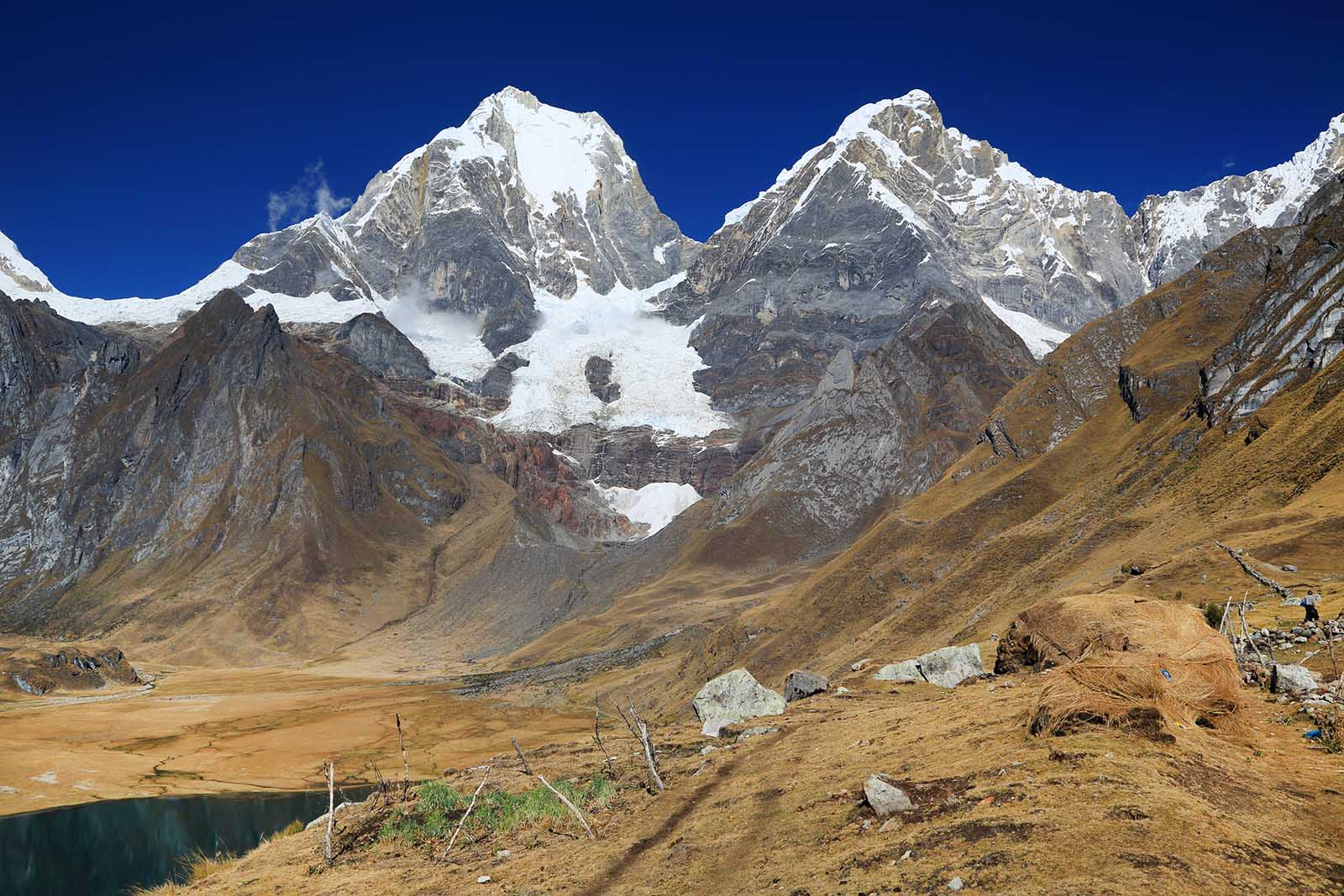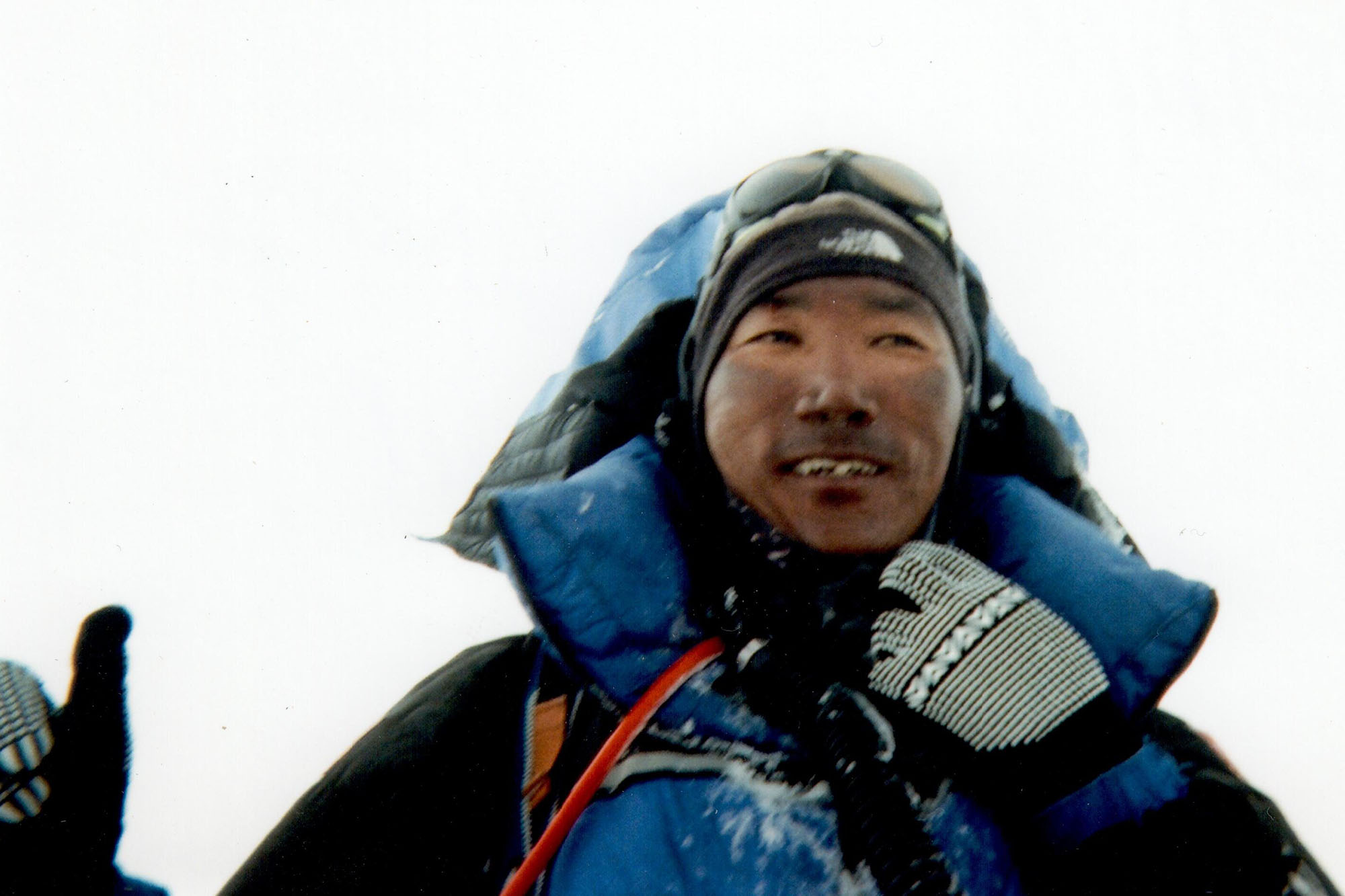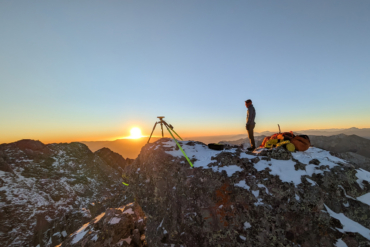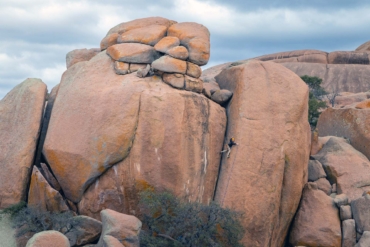Read on for a complete rundown of the world’s 10 most dangerous mountains for climbing, listed in no particular order. Most death statistics for Himalayan mountains come from The Himalayan Database, which collected data from 1950 to 2019, or 8000ers.com.
Editor’s Note: This article was originally published in 2008. It has been updated for clarity and accuracy.
1. Nanga Parbat in Gilgit-Baltistan, Pakistan (26,657 Feet)

Known as “Killer Mountain,” this craggy monster in Pakistan is an enormous ridge of rock and ice. Nanga Parbat is the ninth-highest mountain in the world, and its southern side is what many call the tallest mountain face on the planet. The Rupal Face rises 15,090 feet above its base.
This peak was the subject of German interest in the 1930s. When only Britain had access to Mt. Everest, German climbers saw Killer Mountain as the highest mountain reasonably scalable by climbers at the time. But that doesn’t mean it was easy.
Nanga Parbat claimed 31 lives before it was conquered by Austrian Hermann Buhl in 1953. Annapurna was regarded as the most dangerous mountain in the world for many years, but Nanga Parbat has recently retaken the record, according to ExplorersWeb.
2. Annapurna in Central Nepal (26,545 Feet)

On this mountain, the 10th highest in the world, several hundred climbers have now summited the avalanche-prone peak since the first ascent in 1950. About 72 have died climbing — making Annapurna’s fatality rate one of the highest among 8,000m mountains.
While Annapurna was the first 8,000m peak to be climbed, it remains a challenge and an attraction. The region surrounding Annapurna is popular for hiking and was the site of what many call “Nepal’s worst-ever trekking disaster.”
In 2014, a snowstorm struck, causing avalanches and the deaths of 43 people. Almost 6 feet of snow fell in 12 hours, and more than 500 people needed rescue.
3. K2, Pakistan-China Border (28,251 Feet)

The second-highest mountain in the world, this peak has a grim reputation, especially when it comes to female climbers. The first woman to reach the summit was the legendary Polish climber Wanda Rutkiewicz, who reached the top in June 1986.
Over the next 18 years, all five female climbers who summited this peak were killed. Three died during the descent down K2, and two others on nearby mountains.
Rutkiewicz also perished close by on Kangchenjunga in 1992. The curse was finally broken in 2004 by Edurne Pasaban, a 31-year-old Spanish mountaineer who continues to climb. In 2017, Vanessa O’Brien became the first American woman to summit K2.
K2’s remoteness and long approach make expeditions extremely resource-intensive and lengthy. It’s known for bad weather and avalanches, which claim the lives of many who attempt it. But its death rate has dropped quickly in recent years, from 25% in 2021 to just 13.7% by 2024, according to 8000ers.com.
4. Kangchenjunga, India-Nepal Border (28,169 Feet)

In 1999, a new James Bond novel found the super spy trekking up Kangchenjunga’s dramatic ridges. Bond may have stopped to admire the gorgeous view, but looks can be deceiving. Avalanches and bitter cold have made this one of the deadliest mountains in the world.
Kangchenjunga is the third tallest in the world, with at least 53 deaths recorded on the mountain since 1905, according to The Himalayan Database. With 568 summits, the mountain’s fatality rate hovers around 10%.
5. Matterhorn, Switzerland-Italy Border (14,691 Feet)

With its first ascent in 1865, the Matterhorn has long been one of the most popular mountains in the world. However, easy access to high points on the mountain can lead to serious danger for inexperienced climbers attempting its busy routes.
These days, the principal danger on the Matterhorn is its popularity, with overeager tourists sending loose rocks onto the heads of fellow climbers below. However, climate change has also made the mountain more dangerous in recent years, with record heat waves leading to increased closures, ExplorersWeb reported.
Storms are also common during the afternoons of summit season. The Matterhorn sees about six deaths per year, with about 600 total deaths recorded since 1865, according to Zermatt.
6. Mt. Everest, Nepal-China Border (29,029 Feet)

With its marquee status, it would be easy to assume that Mt. Everest is the deadliest mountain of them all. But, pound for pound, Everest claims a fairly small percentage of climbers, considering the number of attempts yearly.
Everest has taken over 280 lives since 1900, according to the Himalayan Database. But thousands of successful ascents — which only grow yearly as expeditions get more efficient at sending people to the summit — mean the mountain’s overall fatality rate is now less than 1%.
But make no mistake: Everest remains a very dangerous mountain.
7. Siula Grande, Huayhuash Range of the Peruvian Andes (20,814 Feet)

Siula Grande is an imposing mountain in the Peruvian Andes, with sheer south and west faces.
In 1985, the duo of Joe Simpson and Simon Yates, whose journey was chronicled in the book and film Touching the Void, attempted the mountain’s western face. The sheer wall had never been ascended — and the story of Yates and Simpson became legendary.
Simpson and Yates reached the summit, but Simpson fell during the descent, breaking his leg. Then, as Yates lowered the injured Simpson down by rope, he lost sight of him over a cliff.
An hour later, with his position slipping away and Simpson unable to secure himself, Yates cut the rope. Incredibly, Simpson survived the 100-foot fall into a crevasse. Over the next 3 days, he subsisted on melted snow and hopped the 5 miles back to camp. He arrived shortly before Yates was set to depart for home.
8. Mt. Washington in New Hampshire (6,288 Feet)

To experience a deadly mountain a little closer to home, look no further than this New Hampshire peak. Rapidly shifting weather, hurricane-force winds, and summer ice pellets scouring this slope have claimed more than 100 lives.
Temperatures at the peak can descend to -50 degrees Fahrenheit. In fact, the strongest wind ever measured on Earth was recorded on this peak, a gale of 231 mph. Nearly 150 people have died on the dangerous mountain, which also sees about 25 rescues every year, according to the Mount Washington Avalanche Center.
9. Denali in Alaska (20,320 Feet)

The highest peak in North America is also one of the most isolated and prominent in the world. A huge challenge of Denali is the time it takes to climb, with expeditions lasting 2 to 4 weeks. Despite many climbers worldwide trying for this bucket list ascent, only about half of them reach the top.
Worse, Denali is prone to earthquakes, and the combination of high altitude and extreme latitude also means altitude sickness kicks in much faster. At the equator, a peak this size would have about half as much oxygen at the summit than at sea level. Because of the latitude, the percentage of oxygen on Denali is far lower.
From 1903 to 2006, nearly 100 people died trying to reach Denali’s summit, according to a 2008 study. Climbers continue to die on the mountain every year, with several fatalities already recorded in 2024.
10. Mont Blanc Massif (15,777 Feet)

The tallest mountain in the Alps has a long history of climbing and climbing accidents. In 1786, its first summit by Jacques Balmat and Michel Paccard was hailed as the start of modern mountaineering.
Today, Mont Blanc is among the most heavily trafficked mountains in the world, with about 20,000 people summiting every year. Yet all of its routes involve extreme hazards such as falling rocks and avalanches.
During peak season, rescue services have been known to average 12 missions per weekend. And it has the highest fatality rate of any mountain in Europe, with estimates of 100 deaths per year.
Nanga Parbat and Annapurna have both been called “Killer Mountain” for their high death tolls for climbers. While Annapurna has long held the record, there has been a higher number of recent deaths on Nanga Parbat, so it has retaken the mantle of “world’s deadliest mountain,” according to ExplorersWeb.
While Everest is not the deadliest mountain, it’s still very dangerous and continues to attract the highest number of people. For that reason, the mountain has hundreds of casualties, and many bodies have remained on Everest for decades. As many as 200 bodies may remain somewhere on the mountain.
The highest unclimbed mountain in the world is believed to be Gangkhar Puensum, a 24,840-foot mountain on the border of China and Bhutan. According to Condé Nast, climbing mountains higher than 20,000 feet has been prohibited in Bhutan since 1994 because mountains like Gangkhar Puensum are sacred.











